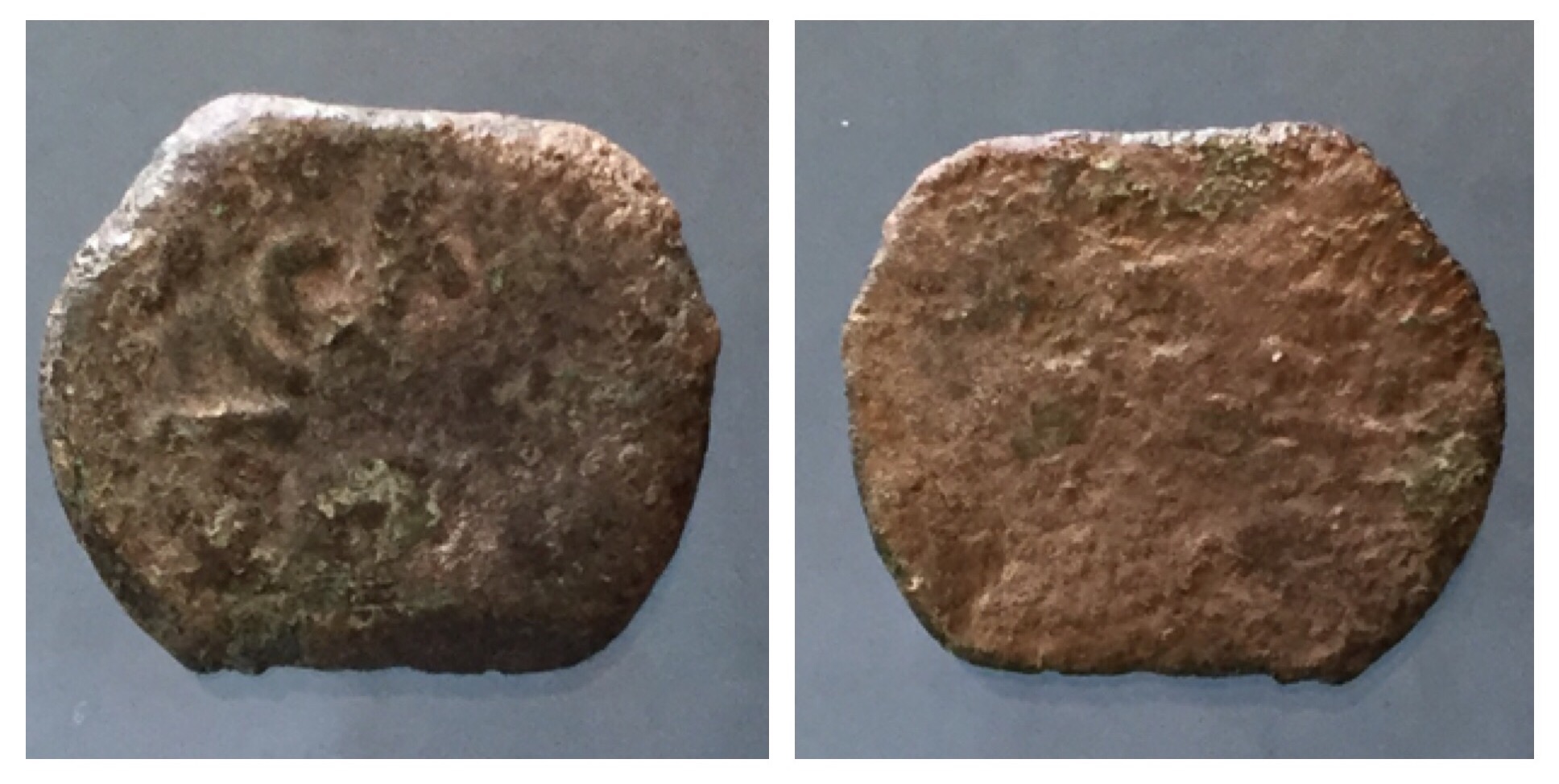Roger Uselton Collection of Ancient and Biblical Coins
Coin Detail
- Uselton Catalog #: 6
- Class: Biblical
- Ruling Authority: Pontius Pilate (26-36 A.D.)
- Date Struck: Ca. 30. A.D.
- Type: AE (bronze) prutah
- Size: 12.2 x 14.2 mm.
- Weight: 1.42 g.
- Die Axis:
- Obverse: Lituus surrounded by Greek inscription [TIBEPIOY] KAICAPOC (of Tiberius Caesar).
- Reverse: Date in wreath; illegible.
- Exergue:
- References: Ya’akov Meshorer, A Treasury of Jewish Coins (New York 2001), pl. 74, no. 333?
- Original #: 17
Hendin argues that the use of the Roman religious implement lituus on this coin was either a deliberate insult to the Jews or a demonstration of imperial indifference and insensitivity. Pilate had been trained as an augur, so he might have been especially keen to include the lituus on his coinage. “The lituus was the wooden staff which the Roman priest, or augurs, held in the right hand to symbolize their authority. They would raise the staff toward the heavens to invoke their gods while making their predictions. J.P. Fontanille states that ‘Legend records that Romulus used it at the time of Rome’s foundation in 753 B.C.E. It is interesting to note that the cross used in present times is the direct descendant of the lituus. As with the simpulum, Pilate’s coinage is exceptional in that it alone displays the lituus as the sole object illustrated on the face.’” – http://pontiuspilatecoin.com
“Pontius Pilate served under Emperor Tiberius and is best known from the biblical account of the trial and crucifixion of Jesus. He was the fifth prefect of the Roman province of Judaea from 26 - 36 A.D. He is known from the New Testament, his coins, brief mention by Tacitus, Philo of Alexandria, Josephus, the Gospel of Nicodemus, the Gospel of Marcion, other apocryphal works, and a stone in the Israel Museum inscribed with his name and ‘PRAEFECTUS IVDAEAE.’” –Forum Ancient Coins Matthew 27:1-2: Jesus Handed Over to Pontius Pilate: “When morning came, all the chief priests and elders of the people plotted against Jesus to put Him to death. 2 And when they had bound Him, they led Him away and delivered Him to Pontius[a] Pilate the governor.”

